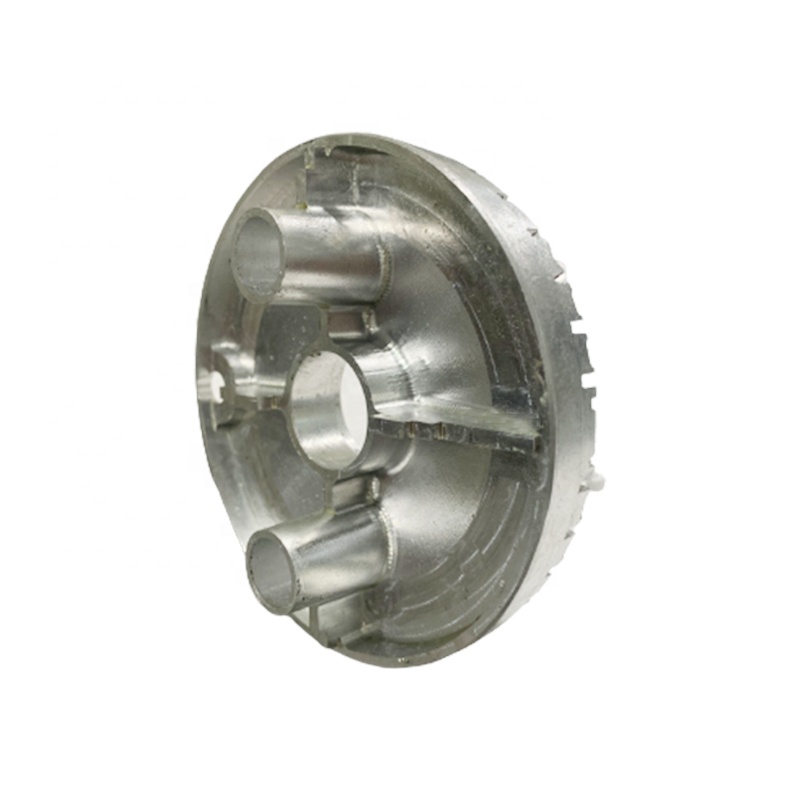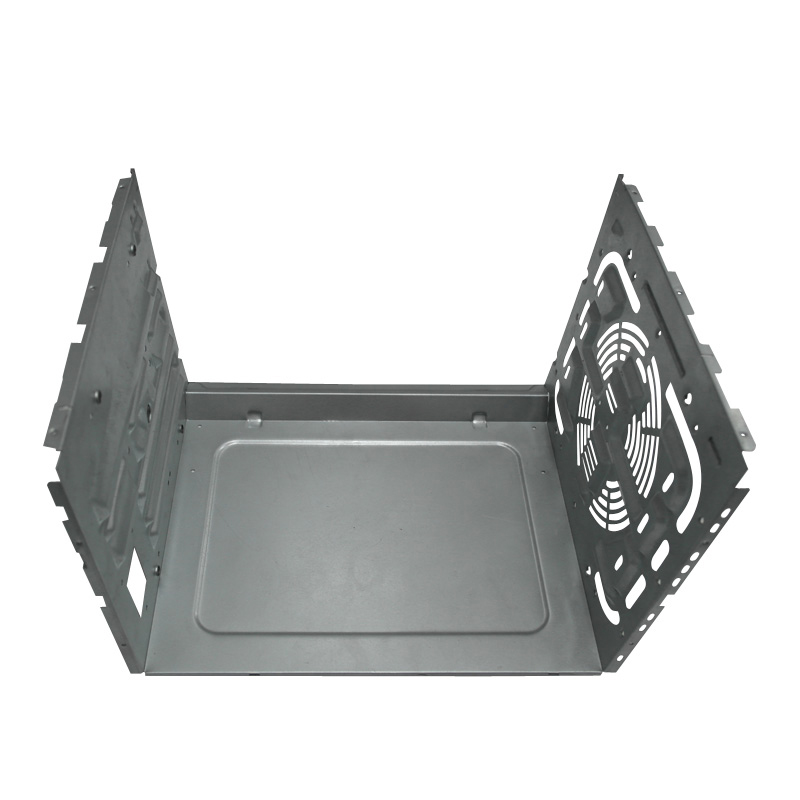Robotic vacuum impregnation can be used to seal porosity, minimize scrap, increase throughput and reduce costs. #asktheexpert #vacuum-vapor
Vacuum impregnation using specially formulated resin to permanently seal porosity in castings. Photo credit: Ultraseal International Vmc Machine Components

Q: What kind of efficiencies are available for vacuum impregnation processes? A. Porosity is one of the defects most frequently encountered in aluminum die casting. Microscopic voids in the metal can lead to leak paths and reduce the density of the cast components. Untreated, casting porosity leads to costly scrappage, creating waste inefficiencies in materials, energy and production time. For parts that go into applications that need to be air or fluid-tight — for example, in fuel or cooling systems — this can be an especially critical issue. Vacuum impregnation is a specialized process designed to permanently seal porosity by using a specially formulated resin to fill porosity in automotive castings.
The drive for new and more efficient production methods has brought with it significant investment in research, development, and new technologies. From harnessing production data to improve processes and digitizing supply networks, through to the introduction of artificial intelligence, the use of robots to fulfill repetitive processes and digitization of the industry is well underway. However, while manufacturing technology and processes evolve to create operational efficiencies and meet market needs, a legacy challenge remains — that of porosity. However, there are some customized automation solutions out there. The following case study offers an example:
A leading US manufacturer of engines, off-road vehicles and motorbikes, creating best-in-class vehicles and achieving operational excellence is key to its continued success. Despite an extremely strong focus on quality control, the company was experiencing high scrappage rates due to porosity in its die cast engine components.
To combat the issue, the company was shipping parts to another state for vacuum impregnation processing. While this arrangement provided a solution, the process was a time-consuming one, often adding a week to production times. To overcome lags in production, the company resorted to keeping a week’s worth of inventory on-site, taking up valuable production space and increasing working capital. Yet, despite the time, effort and financial investment in the process, the scrappage rate was still around 11%.
The company turned to Ultraseal International, a leader in sealing porosity and leak paths in die cast, sintered and electrical components. Ultraseal’s engineers worked with the company to design and install a fully automated, robotic, vacuum impregnation system.
The custom automated solution offers fast cycle times, improved productivity, cost-effectiveness, more reliable sealing rates and improved environmental performance. Crucially, during an initial system trial, the 11% scrappage rate was reduced to nil and the one-week turnaround to a speedy 12 minutes.
By switching to an automated solution, the company has achieved 100% sealing effectiveness and improved output quality. Where the handling and processing process had previously resulted in component damage, the parts now benefit from an impressive and consistent gloss black finish. The addition of a multifunctional corrosion inhibitor means that the products remain resistant to rust, retaining their glossy appearance long beyond the point of manufacture.
In an industry where batch traceability and process control are vital, the Ultraseal system software offers total process control visibility and data logging. For added flexibility, the system can be pre-programmed to process components from two different production lines or alternate between both, while remote diagnostics help to optimize plant performance and minimize unplanned downtime.
With both shipping costs and time a huge issue with the previous outsourced setup, the small footprint of the system meant that it could be integrated into the customer’s existing manufacturing line without compromising on workflow or floor space.
While many industries are yet to fully embrace the benefits that Industry 4.0 implementation could bring, elements of the smart factory are increasingly commonplace. For the automotive industry, where levels of digital adoption are high, smart technology and IoT-connected devices offer proven benefits over more traditional manufacturing processes.
Despite the perception of Industry 4.0 as a revolutionary process requiring a huge level of capital investment, robotic automation is increasingly affordable and available to organizations of every size. In fact, such systems often offer a fast return on investment, reducing floor space and allowing production processes to run for longer periods. In the case of the Ultraseal robotic vacuum impregnation system, equipment, chemicals and processes are more economical and environmentally sustainable than traditional alternatives — while also offering improved quality and increased repeatability.
Casting impregnation is usually carried out in three stages. Initially, parts are placed in an autoclave and a vacuum is used to draw air out of any voids before a liquid sealant is introduced. The parts are then washed in a cold wash cycle to remove excess sealant from component surfaces as well as critical areas such as threaded holes. The final step is the hot cure cycle, where heat is used to polymerize the sealant within the void, turning it from a liquid state into a solid polymer.
Like all other manufacturing processes, vacuum impregnation produces waste. In the standard impregnation process described above, around 95% of the sealant is washed off the components during the cold wash cycle. These non-recoverable chemicals must be handled as effluent. This adds considerable environmental management processes, as well as significant costs for both the processing and wastage of large volumes of chemicals. The cold wash process in the Ultraseal Sealant Recycling System operates in a closed loop. As well as enabling the sealant to be reclaimed from the cold wash solution, the process allows both the sealant and the cold wash solution to be reused, with no need to continually replace the water.
This automated process offers best-in-class sustainability. With lower sealant and water consumption, less effluent discharge and no need to ship parts to distant suppliers, the customer has significantly reduced its environmental impact when compared to its previous vacuum impregnation process.
As automotive manufacturers continue to embrace thinner-walled castings, lighter materials and new technologies in a bid to reduce vehicle weight, porosity sealing technology will become an increasingly vital process. Incorporating vacuum impregnation into production lines can help manufacturers reduce scrap and material wastage while increasing component life cycles and improving environmental performance.
Bob Remler is the technical sales manager in North America at Ultraseal International.
For bright nickel process troubleshooting, Doug Lay of Coventya suggests narrowing the scope with a checklist.
Verney Denerville of TIGER Drylac discusses recommendations for avoiding or mitigating blistering defects in powder coatings.
As raw materials become increasingly scarce, powder coating consultant Rodger Talbert offers insights into using non-TGIC products.

OEM CNC auto parts Copyright © 2023 Privacy Policy [Log On]